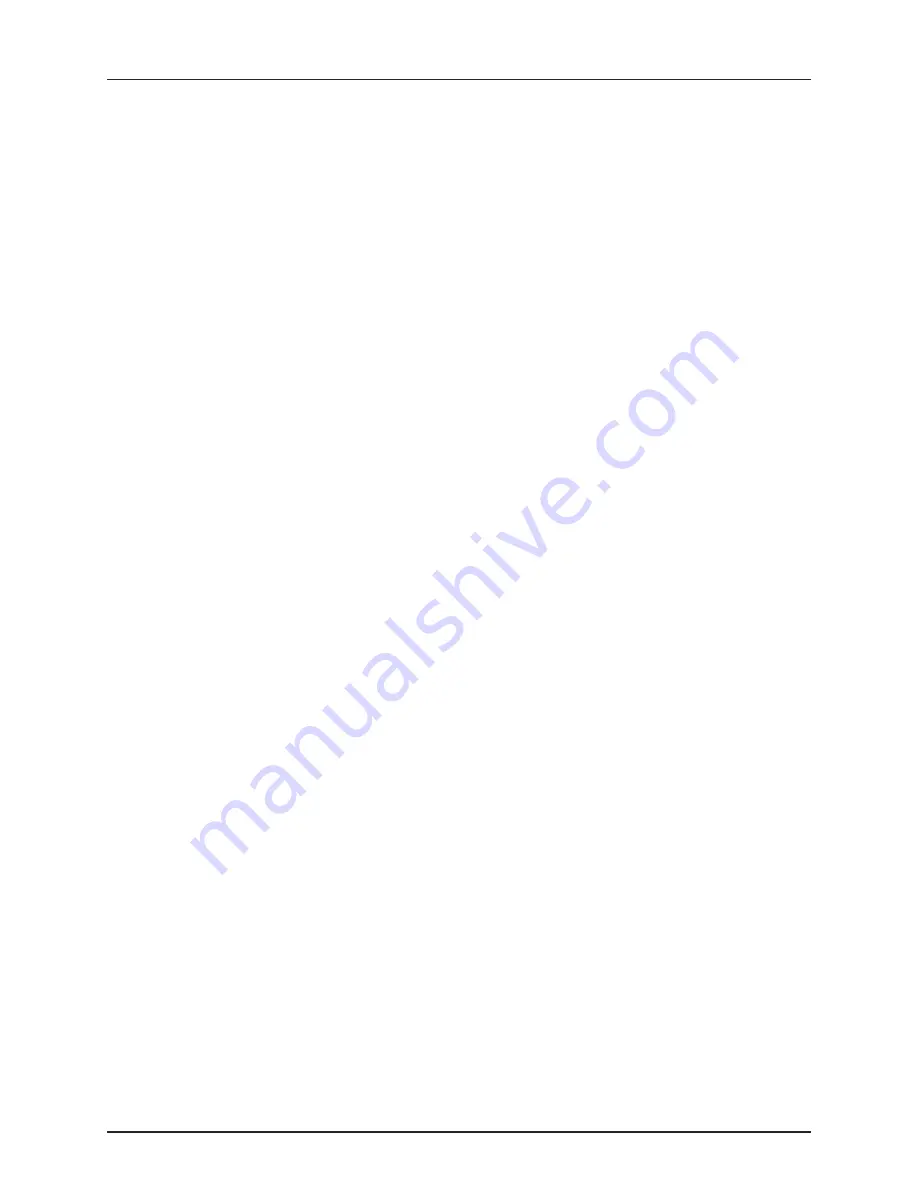
5 - Operation
89
Use of Rinsing Tank and Rinsing Nozzles
The integrated rinsing tank can be used for three different purposes:
A.
Full internal rinsing (In-field diluting before cleaning or when using same chemicals again soon).
B.
External cleaning of the sprayer (can only be carried out after completion of “A.”).
C.
Rinsing the liquid system without diluting main tank contents (Rinsing when main tank is not empty).
D.
Full internal cleaning (before storage or when switching chemicals).
ATTENTION! The cleaning procedures stated requires the TurboFiller to be cleaned beforehand (directly after the last
chemical filling). If the TurboFiller has not been cleaned, it must be cleaned before performing cleaning procedures
A, B, C or D. See “TurboFiller Rinsing” on page 84.
Note that cleaning the TurboFiller will then use water from the rinsing tank, thus reducing the available quantity for
the cleaning procedures.
ATTENTION! Do NOT fill any cleaning agents into the rinsing tank. If cleaning agents are to be used, they should be
filled into the main tank, e. g. via the TurboFiller.
A. Full Internal Rinsing
In-field diluting of remaining spray liquid residues in the spraying circuit for spraying the liquid in the field, before cleaning
the sprayer.
÷
NOTE! This rinsing is adequate/sufficient when the sprayer is going to be used again shortly (e.g. next day) in same or
similar crops (No risk of cross contamination and subsequent crop damages).
±
WARNING! If the next crop to be sprayed is sensitive to the latest chemical used, then a full cleaning should be carried
out. See “D. Full Internal Cleaning (Soak Wash)” on page 92.
±
WARNING! Never clean the sprayer if there are risks of contamination of surface or underground water! Choose a
different spot for cleaning every time to avoid spot contamination to build up.
This rinsing procedure will rinse the liquid system and main tank as follows:
1.
Empty the sprayer as much as possible. Close the agitation valve (no agitation). Allow the pump to run for at least 1
minute after the liquid has stopped coming out of the nozzles to ensure that all relevant liquid has been expelled.
2.
Shut off all nozzles with the main ON/OFF button on the grip.
3.
Turn suction SmartValve to “Rinsing tank” and pressure SmartValve to “Spraying”. Set agitation valve to “Full agitation”.
4.
Engage and set the pump at approximately 560 rpm.
5.
Use 1/3 (approximately 40 gal or 150 l) of the rinsing tank content at this valve setting.
6.
Close the agitation valve and turn the pressure SmartValve to “TurboFiller” for at least 3 seconds without activating the
Turbofiller to burst and flush the safety valve. The TurboFiller is not flushed by this operation.
7.
Turn suction SmartValve to “Main tank”. Engage the auxiliary pump (FlexCapacity configurations only). Set the spraying
pressure at 45-75 psi (3-5 bar). If the pressure is set outside this range, the rinsing result may be insufficient.
8.
Allow the rinsing water in the main tank to circulate for minimum 45 seconds with the nozzles shut to flush the return
lines from boom to tank.
9.
Open all nozzles and spray the rinsing water from the main tank through the nozzles while driving in the field. Choose
a different location each time to distribute the rinsing water over larger areas. Continue until all fluid is expelled from
the boom tubes and nozzles - this may take several minutes after the spray fan has collapsed.
10.
Shut off all nozzles by the main ON/OFF button on the grip.
11.
Turn the suction SmartValve to “Rinsing tank” and the pressure SmartValve on “Internal tank rinsing”. Use another 1/6
(approximately20 gal or 75 l) for this. The tank strainer should be removed to avoid shading the rinsing nozzle.
12.
Turn the suction SmartValve to “Main tank” and the pressure SmartValve to “Spraying”. With the nozzles shut, allow the
liquid to circulate for minimum 30 seconds to flush the return lines from boom to tank.
Summary of Contents for COMMANDER 5500
Page 2: ......
Page 4: ......
Page 10: ...Table of Contents 8 ...
Page 12: ...1 Welcome 10 ...
Page 48: ...3 Description 46 ...
Page 96: ...5 Operation 94 ...
Page 99: ...6 Maintenance 97 Lubrication and Oiling Plan Boom Width 80 100 10 10 10 C 500 C 50 C 50 10 ...
Page 100: ...6 Maintenance 98 Lubrication and Oiling Plan Boom Width 120 10 C 500 C 50 10 ...
Page 129: ...6 Maintenance 127 At the same time adjust the two stop bolts to align the boom sections ...
Page 142: ...6 Maintenance 140 ...
Page 162: ...8 Technical Specifications 160 ...
Page 168: ...Index 166 ...
Page 169: ......
















































